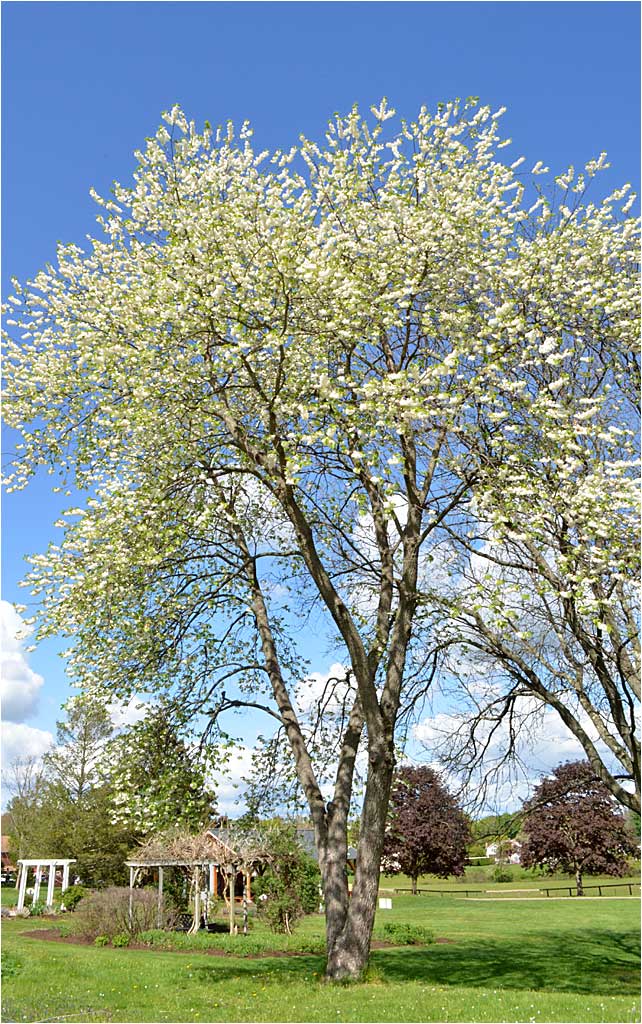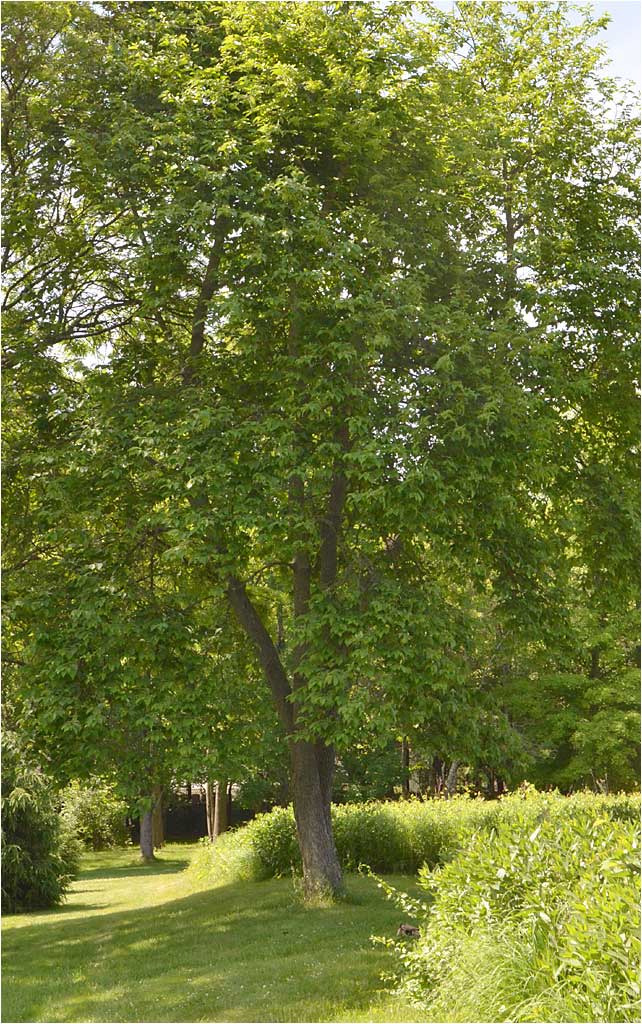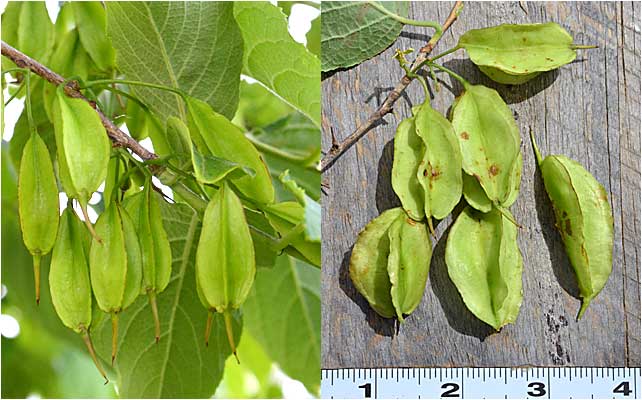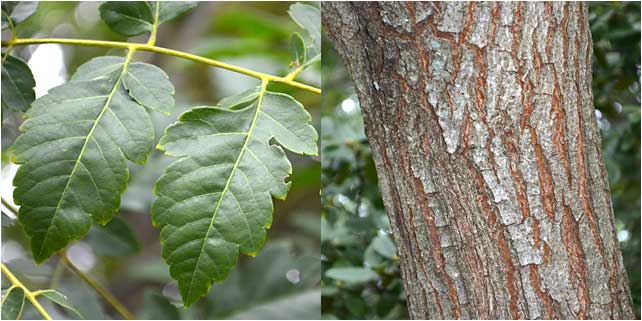32. CAROLINA SILVERBELL
Halesia carolina
CT Notable Tree

The Carolina Silverbell is native to the south-central U.S. but has transplanted well to southern New England. This specimen is tall for its species, and it is a CT Notable Tree. In early Spring, the tree appears to have very lightly colored leaves - but on closer inspection we see it is a mix of early leaves and a bell-shaped flower which appears in April. The rose coloring is only on very early flowers.
SPRING SPECTACULAR

Early May sees a spectacular display of small, bell-shaped, white flowers. The entire tree appears to be white, and the flowers face down. The best way to view them is from directly underneath the tree.
PERFECT FLOWERS, SPRING

From the side, the flowers appear to be bell-shaped - a reference to the tree's name. From below, the view of the perfect flowers is magnificent. The tree features monecious perfect flowers (male and female parts in each flower on the same tree).
SPRING, EARLY FRUIT DEVELOPMENT

After the flowers fall, you see these long stalks remaining on the tree. These are the fertilized seeds and a winged, 4-sided fruit will grow around it over the Spring and Summer. The fruit stays on the tree thru the fall, although it turns brown later in the year.
MID-SPRING LEAF OUT

The Silverbell lives on the side of our wildflower meadow, and shares the space with a mature male Honey Locust.
LATE SPRING

The 4-winged fruit develops in the early Summer and stays on the tree for the duration. It is reported that wildlife are not interested in the fruit, but we have seen lots of squirrels chewing through the top of the fruit to get at the seed, and then throwing the rest of the fruit on the ground.
SUMMER LEAF & BARK

The leaf is app. 2 inches long, alternately arranged, and has irregular serrations and two lobes close to the base of the leaf. The lower bark of the tree is often fissured and shows glimpses of the reddish inner bark. The upper bark is not as heavily furrowed and appears grayish. It is an attractive tree.
BRILLIANT FALL COLOR

Brilliant Fall color is a signature of the Carolina Silverbell and varies from yellow to orange depending on Spring and Summer growing conditions.
WINTER

Winter brings a period of rest and dormancy. The Silverbell is one of the Arboretum's historic trees (no planting information exists). Our suspicion is that it might have been an early acquisition of Charles and Leila Hunter when they first acquired the property in 1939. It is a strong probability that the Silverbell and adjacent Honey Locust were planted. There is also a row of Japanese Zelcovas (24 of them) that are also of this size (or even a bit older), so there is ample evidence of new plantings 75 - 90 years ago.